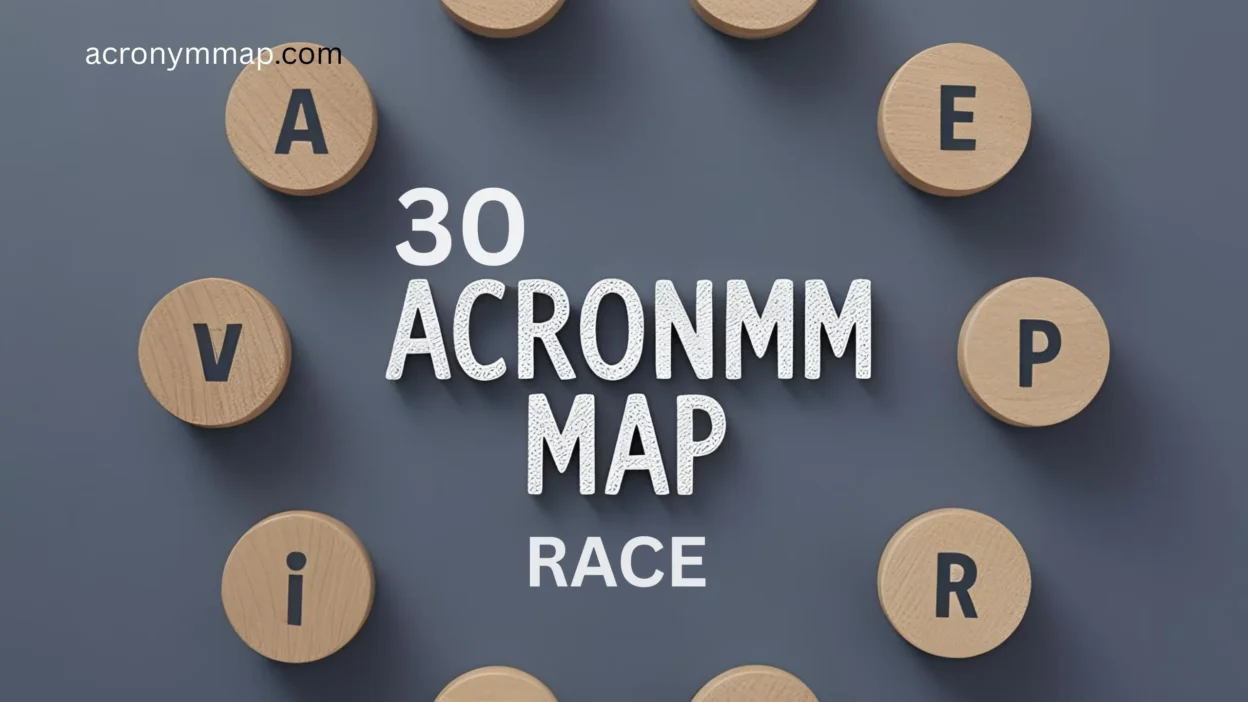In the medical world, RACE isn’t just about ethnicity—it’s also a critical emergency protocol used in fire safety, especially in hospitals, nursing homes, and healthcare facilities.
The RACE acronym is a step-by-step emergency response plan that helps healthcare workers respond to a fire quickly and safely.
🚨 What Does RACE Stand For in a Medical Emergency?
RACE is a fire response acronym that stands for:
- R – Rescue anyone in immediate danger
- A – Alarm: Pull the fire alarm and alert others
- C – Contain the fire by closing doors
- E – Extinguish the fire (if safe to do so), or Evacuate
This acronym is vital in hospitals, where patients might be immobile or need assistance. Knowing this procedure helps ensure both patient and staff safety during fire emergencies.
🔁 30 Related Acronyms & Alternatives Used in Emergency Medical Settings
Here are 30 other acronyms used in healthcare emergencies, along with their meanings, example usage, and the best time to use each. These aren’t direct synonyms for “RACE” but are related emergency and safety protocols, commonly used in healthcare settings.
1. PASS
Pull, Aim, Squeeze, Sweep – for using a fire extinguisher.
Use with: RACE, at the “Extinguish” stage.
2. CODE RED
Meaning: Fire emergency code.
Use when: Announcing fire in a hospital setting.
3. CODE BLUE
Meaning: Medical emergency (cardiac/respiratory arrest).
Example: “Code Blue in Room 207!”
Use in: Life-threatening patient situations.
4. CODE BLACK
Meaning: Bomb threat or severe threat.
Use in: Hospital lockdown or emergency threat response.
5. CODE PINK
Meaning: Infant or child abduction.
Use in: Pediatric or maternity areas.
6. ABC
Airway, Breathing, Circulation – basic life-saving priority steps.
Use in: CPR or trauma cases.
7. CAB
Circulation, Airway, Breathing – modern CPR approach.
Use in: Cardiac arrest resuscitation.
8. FAST
Face, Arms, Speech, Time – stroke detection.
Use in: Quick stroke assessment.
9. BE FAST
Balance, Eyes, Face, Arms, Speech, Time – enhanced stroke check.
Use for: Broader stroke warning signs.
10. STOP
Stop, Think, Observe, Proceed – used for safety decision-making.
Use in: Mental checks before action.
11. DNR
Do Not Resuscitate – end-of-life directive.
Use when: Patients decline resuscitation.
12. AED
Automated External Defibrillator
Use in: Cardiac arrest.
13. Triage
Not an acronym, but a method of prioritizing care.
Use when: Resources are limited in emergencies.
14. REACT
Remove, Ensure safety, Activate alarm, Call 911, Try to extinguish
Use in: Some facilities instead of RACE.
15. PPE
Personal Protective Equipment
Use when: Infection control or exposure risk.
16. ISBAR / SBAR
(Identify, Situation, Background, Assessment, Recommendation)
Use in: Shift handovers, communication clarity.
17. AMPLE
Allergies, Medications, Past history, Last meal, Events leading up
Use in: Rapid patient assessments.
18. DRSABCD
Danger, Response, Send for help, Airway, Breathing, CPR, Defibrillation
Use in: Emergency care in Australia/UK.
19. HAINES
High Arm IN Endangered Spine – recovery position for trauma.
Use in: Suspected spinal injuries.
20. MIST
Mechanism, Injuries, Signs/Symptoms, Treatment
Use in: Handover from EMS to hospital staff.
21. AVPU
Alert, Verbal, Pain, Unresponsive – consciousness check.
Use in: First-response assessment.
22. PERRLA
Pupils Equal, Round, Reactive to Light and Accommodation
Use in: Neurological checks.
23. SOAP
Subjective, Objective, Assessment, Plan – clinical note format.
Use in: Patient documentation.
24. OLDCART
Onset, Location, Duration, Character, Aggravating, Relieving, Timing
Use in: Pain assessment.
25. ABCDE
Airway, Breathing, Circulation, Disability, Exposure
Use in: Trauma/emergency assessments.
26. NAEMT
National Association of Emergency Medical Technicians
Use as: Credential indicator in EMS contexts.
27. HEENT
Head, Eyes, Ears, Nose, Throat
Use in: Physical exams.
28. LOC
Level of Consciousness
Use in: Neurological monitoring.
29. EMS
Emergency Medical Services
Use for: Pre-hospital care teams (ambulances, paramedics).
30. BLS / ACLS
Basic / Advanced Cardiac Life Support
Use in: Life-saving certifications.
🧠 Choosing the Right Medical Acronym
- Use RACE and PASS together in fire emergencies.
- Use color-coded codes (e.g., Code Blue, Code Red) for broadcasting hospital-wide alerts.
- Use ABC, CAB, FAST, or DRSABCD in trauma or cardiac cases where quick decisions save lives.
- Use ISBAR/SBAR, SOAP, or MIST to structure communication clearly.
Each acronym has a place—many are facility-specific, and others (like RACE) are taught during hospital onboarding and fire safety drills.
🏥 Final Thoughts
Understanding RACE and related acronyms helps healthcare workers protect lives—not just during fires but across every type of emergency.
These systems exist to bring calm, order, and rapid action when seconds matter most. Whether you’re a medical professional, student, or support staff, memorizing these can mean the difference between panic and precision.

